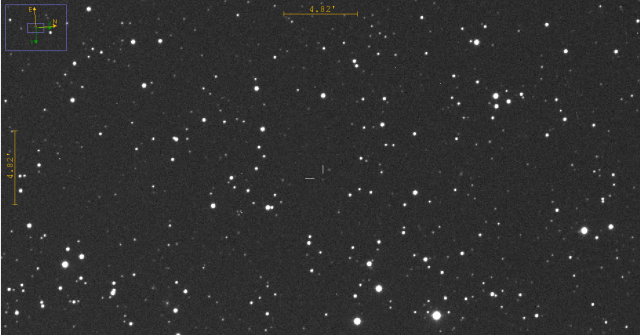Forum Replies Created
-
AuthorPosts
-
 Graeme CoatesSpectator
Graeme CoatesSpectator2021-01-07 2154-2208UT ER UMa Mag 13.6V
2021-01-07 2218-2234UT RZ LMi Mag 17.1V(350mm Newt, ST2000XM)
 Graeme CoatesSpectator
Graeme CoatesSpectatorYes – it needs much longer exposures than with my 350mm newt at home(!) and there’s greater uncertainty, but definitely can determine that it’s not in outburst
Clear skies offer some definite advantage, and it’s much darker there as well than my garden here in the UK!
Unfortunately, not possible last night.
 Graeme CoatesSpectator
Graeme CoatesSpectator04-01-2021 0340-0421UT: ER UMa Mag. 14.8-15.0 (TG)
 Graeme CoatesSpectator
Graeme CoatesSpectator2021-01-03 1851UT – Better conditions than yesterday (better transparency).
Mag 17.0 (CV)
 Graeme CoatesSpectator
Graeme CoatesSpectatorI have this somewhere around Mag 17.5-17.9 (CV) at 18:45UT this evening (2nd Jan 2021) – not a very accurate measurement as running from Spain with a small widefield refractor, and it’s already getting low at dusk – 8 oktas at home…

(This a single 10min exposure (ED80 + STF8300M)
 Graeme CoatesSpectator
Graeme CoatesSpectatorLooks like this is brightening significantly – https://www.virtualtelescope.eu/2020/06/29/supernova-sn-2020nlb-in-messier-85-is-rising-an-image-28-june-2020/ put it at Mag 14.4 (June 28.8707).
 Graeme CoatesSpectator
Graeme CoatesSpectatorI’d actually say that (certainly for the blue curve) that the dark current is not linear in that plot – a proper analysis would show how close to a straight line it is. A few hundred ADU out may introduce a reasonable systematic error.
Anecdotally, using my QHY163M (same chip as the 1600) for deep sky imaging I’ve found that scaling (and even allowing Pixinsight to try “optimizing” darks) just doesn’t work properly. If you create a dark library for a few different exposures (10/20/30/45/60/90/120/180/300) then they can be reused for quite a while before needing rebuilding – just make sure the offset and gain are the same as for the lights.
A useful activity for a cloudy night or two…
 Graeme CoatesSpectator
Graeme CoatesSpectatorSomeone (ahem…) years ago decided to build the observatory due south of my wife’s office – not sure she’d be happy with a demolition job to have half a chance of an observation of this one! (I think even then, there’s a large ash tree that might get in the way!)
 Graeme CoatesSpectator
Graeme CoatesSpectatorGreat – thanks all for your thoughts. I played around a little with the varying radii of the annulus and it actually seemed to be reasonably stable in terms of calculated magnitudes. I’ll tabulate the results and pop them here in when I get chance to sit down and do it.
Interestingly, the figures I see in running this initially are a good half magnitude lower than other estimates I’ve seen – clearly this will be due to subtraction of flux from M61 – and it will disagree with visual estimates that have no way of doing that!
 Graeme CoatesSpectator
Graeme CoatesSpectatorThanks Robin – yep – certainly don’t have the luxury of subtracting either image pre-SN like the surveys 😉
I wonder if anyone has a suggestion on software to allow background modelling to allow me to reduce the data I have? AIJ doesn’t look to have this feature (it allows aperture photometry with background subtraction via an annulus, and (I suppose by setting the inner and outer background radii to the same value) PSF photometry without any background correction – possibly more accurate than the former, but then still prone to inaccuracies…
-
AuthorPosts
